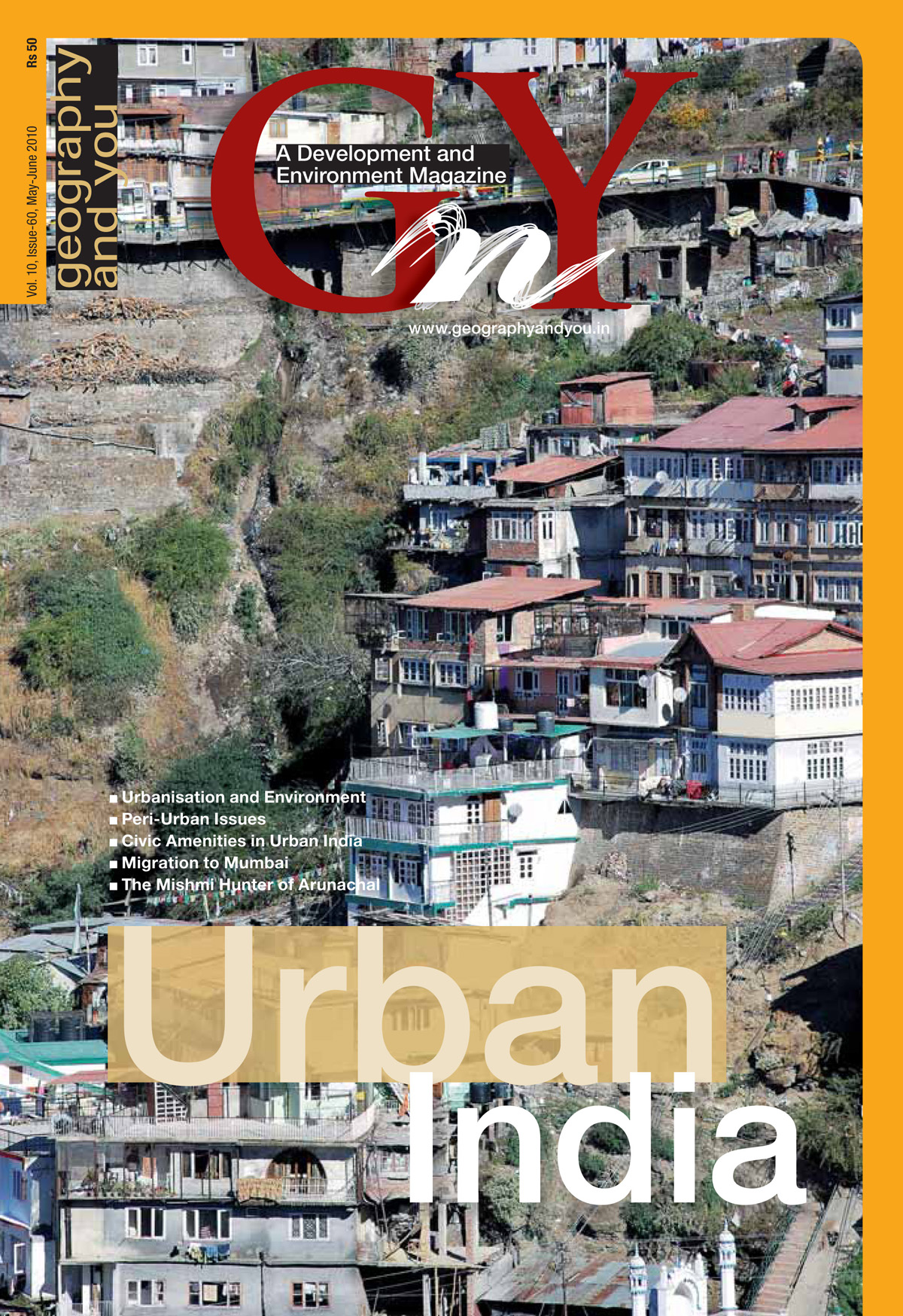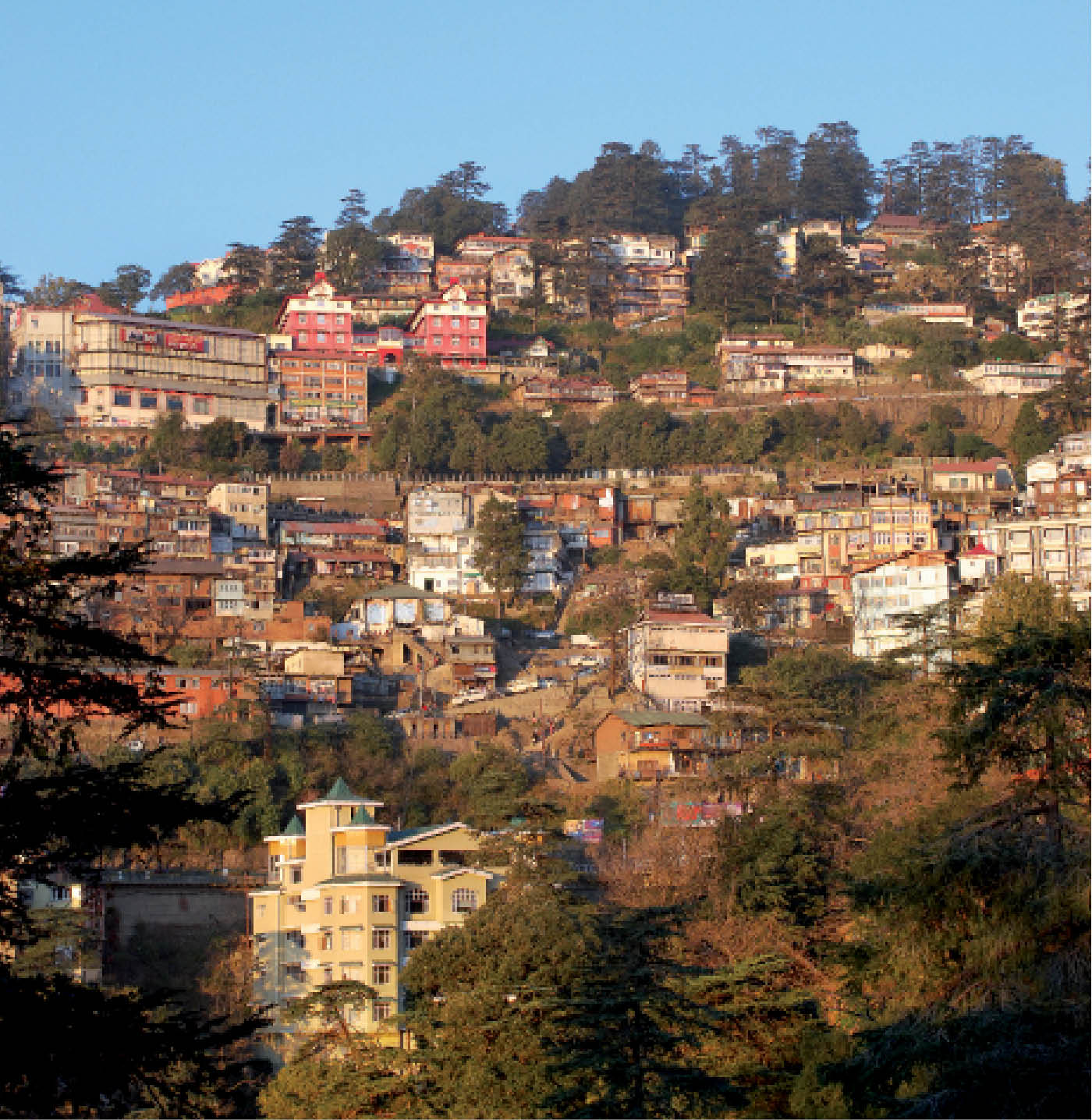
Inside this issue
Urbanisation
The process of urbanisation in India has been slow with lopsided concentration of population in large cities. Unsustainable cities marked by a variety of environmental problems are the outcomes. Innovative city planning and public awareness are steps to counter these processes.
Cities are dynamic human artifacts undergoing changes which influence their relationships with the surroundings. Initially the rural-urban interface was conceived as characterised by distinctly different land-use patterns and human behaviours. However, growing urban population and increasing rural-urban interdependencies have not only changed this perception, but have also brought attention to ensuing environmental problems.
The 74th amendment mandates urban local bodies to take up public health issues, sanitation and solid waste management largely on their own. Small urban centres, however, lack financial and technical capabilities to design such projects. Recent interventions cater to big cities resulting in further marginalisation of smaller centres.
The nature of migrants to Mumbai warrant differentiated planning and alternatives for the city as well as the suburbs. A study based on about 11,000 migrant households spread over the city and its constituent units show that Greater Mumbai has emerged as a site for recent young migrants who are first-time job seekers whereas the surrounding constituent settlements of the agglomeration house relatively better equipped, settled migrants who have moved for over two decades.
Telecom sector
Energy conservation has become a strategic issue for telecom service providers as energy saved translates into profit, less emission of carbon into the atmosphere, and can be used to meet the demand of priority sectors as the gap is seriously growing between the consumption and production.
The Indian growth story as an emerging market has been acknowledged world over. The potential for growth in telecom is huge, keeping in view the current modest tele-densities in the country vis-à-vis the developed countries. With the opening of 3G networks, demand for bandwidth is expected to grow manifold in the days ahead.
Changing Climate
Issues of regulated generation of carbon dioxide have remained unresolved despite prolific attempts at global forums. The clash between carbon crediting and economic development has made the debate further complicated. The essay suggests several alternatives as mechanisms to reduce carbon dioxide generation including prospects of burying it deep down the earth.
The intensity and variability of monsoon rain depend upon several parameters of atmospheric circulation, which in turn are interlinked with global climate. Changes in global temperatures are likely to make about 1500 billion cubic metres of surplus rainwater annually available. To capture this, and to cope up with variability, India would need to develop appropriate science, technology and skill.
Traveller's diary
The idyllic rhododendron town borrows its name from a 350 year old temple of Shiva, Mukteshwar Dham, situated atop the highest point in the town, within the Indian Veterinary Research Institute campus. Close to the temple precincts lie the overhanging cliffs, Chauli-ki-Jali, which are used for rock climbing and rappelling and provide an excellent view of the valleys below.
Ecosystems
The state of Chhattisgarh houses several species of endangered wild life. Encroachment by people and destruction of natural habitat threatens the existence of these animals. The State has initiated a variety of conservation projects which are aimed at creating environs where animals and people can live in symbiotic relationship.
The inevitability of forest dependence amongst tribes in Arunachal creates a paradox in wild life protection. The tussle is between livelihood, traditional practices and conservation concerns. It is argued that modern market linked commercial actives are far more responsible for destruction of wild life in the frontier regions. The current and future conservation approach must take cultural realities of hunting, contemporary economic processes and people’s perspectives into account to succeed.
It was a land of hunters. Every home of this poverty stricken village possessed a gun, and winter was boom time. With country boats and loaded guns they foraged the vast wetland for prized migratory birds, firing with perfect precision. Poaching raked in as much as Rs. 25,000 per month till about 1997 when a magical transformation happened—the hunters foresaw their barren future, and turned protectors. Today the notorious poachers are very important members of ‘Shree Shree Mahavir Pakshi Suraksha Samity’.
In brief
Dear readers, Cruising above Delhi have you ever noticed the sickly smog hanging above our homes? Or have you ever squeezed your nostrils shut while crossing Mahim in Mumbai? And, have you ever stopped to ask for directions on a busy road in Kolkata where every car was honking? Each of these experi

